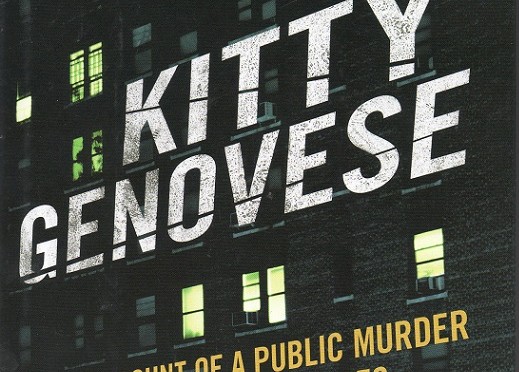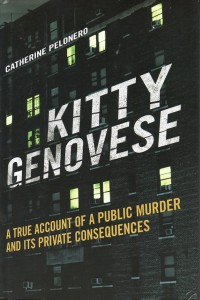Book Review: Kitty Genovese: A True Account of a Public Murder and Its Private Consequences by Catherine Pelonero
Disclaimer: I received this book as a Goodreads giveaway on the premise that I would review it.
I am not quite old enough to have any firsthand memories of the coverage of the March 13, 1964 murder of Kitty Genovese in Kew Gardens, a quiet neighborhood of Queens, New York City. Certainly my parents would not have discussed the more sordid details of the case where I could hear. By the time I graduated high school, I knew the vaguest outline of the case, as it demonstrated the “bystander effect.”
It was, and is a notorious case precisely because of that bystander effect; the crime was committed in the hearing and sight of many of Ms. Genovese’s neighbors, and the final assault was in the hallway leading to a friend’s apartment, a friend who refused to open the door. For various reasons, many understandable, the witnesses did not intervene beyond one person shouting at the man, and the police were not properly called until much too late.
The first chapter is a description of the crime itself, as pieced together from the murderer’s confession, witness testimony and police investigation. This is followed by an account of the initial investigation, then the book moves to biographies of both Kitty Genovese and her killer, Winston Moseley. After that, the account moves forward in a more linear fashion through the police investigation, and the press pieces that exploded the case onto the world stage.
The section on Mr. Moseley’s trial is perhaps the least interesting part–it’s largely repeating of testimony saying things already covered in earlier chapters. The defense tried to get an insanity verdict, but although Winston Moseley clearly had something wrong with him, the jury decided he knew what he did was illegal and could have chosen not to kill.
There’s a bit of excitement when Mr. Moseley escapes from Attica in 1968 and Buffalo is terrorized for three days.
The remainder of the book is about the continuing legacy of the Kitty Genovese case, including the institution of the 911 system to make it easier to call the police when you suspect a crime or other emergency is happening. One thing not mentioned in the book is that the case plays a role in the Watchmen comic book series; it spurs Rorschach to take an active role fighting crime, and his mask is cut from cloth meant for Kitty’s dress.
Much of this material has been covered in previous books, but this volume includes the revisionist view that emerged in the 1990s that the stories of the witnesses’ apathy were deliberately exaggerated by the police and media. The author finds this view suspect, more of an attempt to shift blame than an honest rethinking.
Other issues also are discussed. The possible effects of racism on Winston Moseley’s psyche, for example (he was black, Kitty Genovese was white.) For those who are easily triggered, rape and domestic violence are discussed.
There’s a spread of black and white photographs in the center (be aware some of the building photos are much more recent and may be slightly misleading.) There is a bibliography (and some other media sources), and an index.
Due to the nature of the content, I would recommend this to no lower than senior high students, although younger teens with morbid tastes (like mine at that age) will find it interesting as well. I would most recommend this book to true crime readers who don’t already have a volume on Kitty Genovese, and students of psychology.


